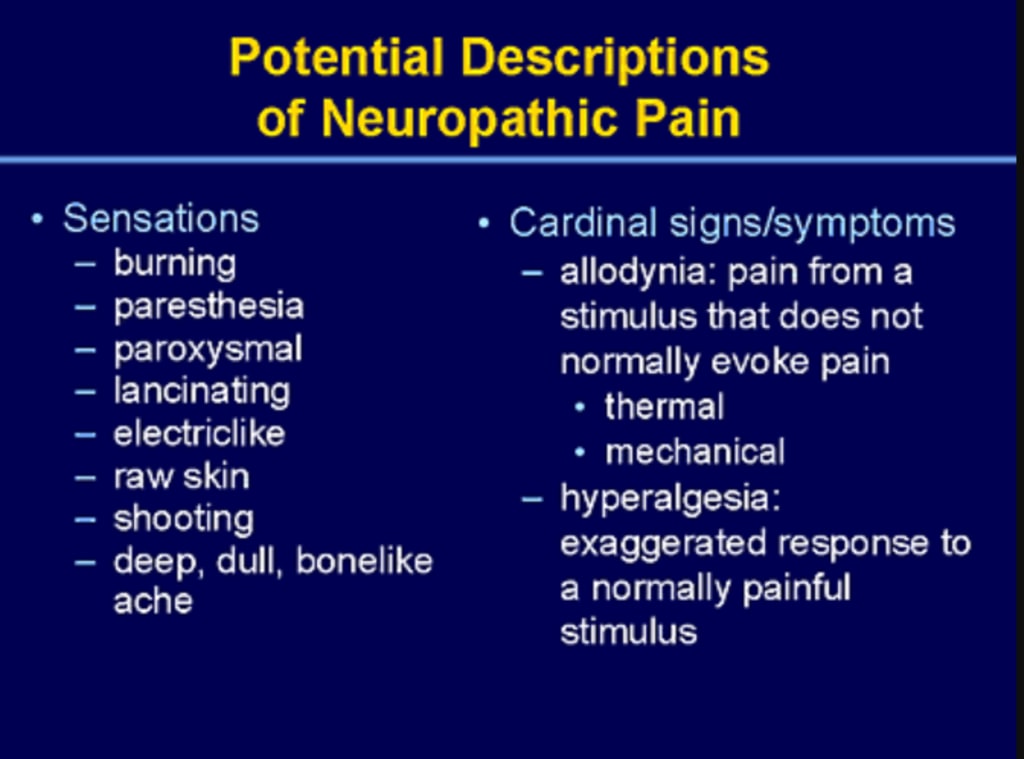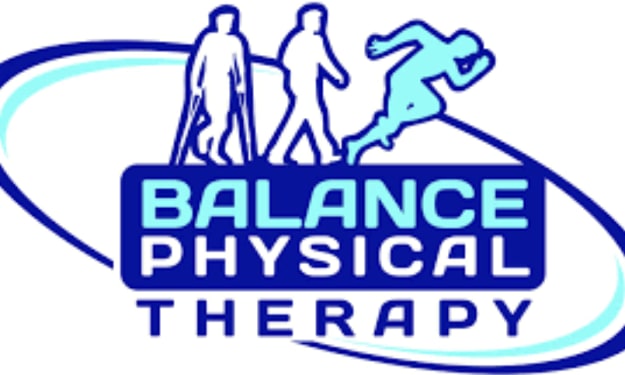What are the four types of neuropathic pain?
What does neuropathic pain feel like?

### What Does Neuropathic Pain Feel Like?
Neuropathic pain, unlike other forms of pain, is a complex and often misunderstood condition that arises from damage or dysfunction in the nervous system. This type of pain can result from various conditions, including diabetes, shingles, multiple sclerosis, and even injuries. But what does neuropathic pain actually feel like? Let's delve into the sensations and experiences commonly reported by those who live with this perplexing form of pain.
#### 1. **Burning Sensations**
Imagine a persistent, unrelenting burn, as if your skin were being scalded by a hot iron or touched by a flame. This burning sensation is one of the hallmark signs of neuropathic pain. It can range from a mild warmth to a severe, deep-seated burning that is impossible to ignore. This type of pain often affects the extremities, such as the hands and feet, but can be felt anywhere in the body.
#### 2. **Electric Shock-Like Jolts**
One of the more startling aspects of neuropathic pain is the sudden, sharp jolt that feels like an electric shock. These jolts can come without warning and are often described as a brief but intense zap that travels along a nerve pathway. They can be triggered by movement, touch, or even occur spontaneously, making them a particularly unpredictable and distressing symptom.
#### 3. **Tingling and Numbness**
Neuropathic pain is not always about intense discomfort; it can also manifest as a tingling or “pins and needles” sensation, known medically as paresthesia. This can be accompanied by areas of numbness, where the sensation is reduced or completely absent. For some, these sensations can be more than just a minor inconvenience; they can interfere with daily activities and lead to significant discomfort.
#### 4. **Stabbing or Throbbing Pain**
Stabbing pain, akin to being pricked repeatedly by needles or sharp objects, is another common description of neuropathic pain. This stabbing can be localized or widespread, and its intensity can vary. Throbbing pain, on the other hand, can feel like a relentless pulse or beat that echoes through the affected area, often worsening at night or during periods of inactivity.
#### 5. **Hyperalgesia and Allodynia**
Hyperalgesia and allodynia are terms that describe heightened sensitivity to pain. Hyperalgesia refers to an increased response to painful stimuli, making what would normally be a mild pain feel excruciating. Allodynia, on the other hand, is when a non-painful stimulus, such as a light touch or a breeze against the skin, is perceived as painful. These conditions make everyday sensations and activities extraordinarily painful and can severely affect one’s quality of life.
#### 6. **Shooting Pains**
These pains are often described as a sensation that travels along the path of a nerve. They can start at one point and radiate outward, like lightning bolts coursing through the body. This shooting pain can be particularly debilitating, making it difficult to perform even simple tasks without triggering a flare-up.
#### 7. **Sensitivity to Temperature**
Temperature sensitivity is another frequent complaint among those with neuropathic pain. Extremes of heat or cold can trigger or exacerbate pain. Even mild changes in temperature can cause discomfort, making it challenging to find a comfortable environment.
#### Living with Neuropathic Pain
For those who experience neuropathic pain, it is more than just a physical sensation; it can have profound emotional and psychological impacts. The chronic nature of the pain can lead to feelings of frustration, helplessness, and even depression. Managing neuropathic pain often requires a multi-faceted approach, including medications, physical therapy, and sometimes psychological support to help cope with the daily challenges it presents.
Neuropathic pain is a deeply personal and varied experience, with each person feeling it in their own unique way. While the descriptions provided here offer a glimpse into the common sensations associated with this condition, the true impact of neuropathic pain can only be fully understood by those who live with it. If you or someone you know is dealing with neuropathic pain, seeking support from healthcare professionals and connecting with others who share similar experiences can be crucial steps toward managing and coping with this challenging condition.
### Understanding the Four Types of Neuropathic Pain
Neuropathic pain is a complex and multifaceted condition resulting from damage to or dysfunction of the nervous system. It is often chronic and can be incredibly debilitating. Unlike pain from an injury or inflammation, neuropathic pain is caused by issues within the nerves themselves, which transmit pain signals to the brain. While neuropathic pain can manifest in various ways, it is typically categorized into four primary types: peripheral, central, focal, and multifocal. Let's explore each type to understand their unique characteristics and how they impact those who live with them.
#### 1. **Peripheral Neuropathic Pain**
Peripheral neuropathic pain arises from damage to the peripheral nervous system (PNS), which includes all the nerves outside the brain and spinal cord. This type is often associated with conditions such as diabetes, where high blood sugar levels can damage peripheral nerves, leading to diabetic neuropathy.
**Characteristics and Symptoms:**
- **Burning or Tingling:** Common sensations include burning, tingling, or a "pins and needles" feeling, typically starting in the extremities (hands and feet) and potentially spreading upwards.
- **Numbness:** Affected areas may also experience numbness or a loss of sensation.
- **Shooting Pain:** Sudden, sharp, or shooting pains that can be triggered by touch or occur spontaneously.
- **Temperature Sensitivity:** Increased sensitivity to heat or cold.
**Common Causes:**
- **Diabetes:** Diabetic neuropathy is one of the most prevalent causes.
- **Injuries:** Trauma or physical injuries that compress or sever peripheral nerves.
- **Infections:** Conditions like shingles can lead to postherpetic neuralgia, a type of peripheral neuropathy.
- **Toxins:** Exposure to toxins or certain medications can damage peripheral nerves.
#### 2. **Central Neuropathic Pain**
Central neuropathic pain originates from damage to the central nervous system (CNS), which includes the brain and spinal cord. This type of pain is often a result of neurological conditions or injuries that affect the CNS's ability to process pain signals properly.
**Characteristics and Symptoms:**
- **Persistent Pain:** Continuous, deep, aching pain that may not respond well to conventional pain treatments.
- **Electric Shock-Like Sensations:** Patients often describe sudden, sharp jolts that feel like electric shocks.
- **Loss of Function:** Pain may be accompanied by muscle weakness or loss of motor function.
- **Hyperalgesia and Allodynia:** Increased sensitivity to painful stimuli (hyperalgesia) and pain from normally non-painful stimuli (allodynia).
**Common Causes:**
- **Stroke:** Damage to parts of the brain that interpret sensory information can lead to central pain.
- **Multiple Sclerosis:** This autoimmune disease attacks the CNS, leading to a variety of neuropathic pain symptoms.
- **Spinal Cord Injuries:** Trauma to the spinal cord can disrupt normal nerve function and lead to chronic pain.
#### 3. **Focal Neuropathic Pain**
Focal neuropathic pain is localized to a specific area and usually results from nerve damage or irritation in that precise location. This type of pain is often easier to pinpoint and diagnose due to its localized nature.
**Characteristics and Symptoms:**
- **Localized Pain:** Pain is confined to a specific region or follows the path of a particular nerve.
- **Sharp or Stabbing Sensations:** Patients may experience sharp, stabbing, or lancinating pains.
- **Numbness or Weakness:** The affected area may also feel numb or weak, depending on the extent of nerve damage.
**Common Causes:**
- **Trigeminal Neuralgia:** A condition causing severe, episodic facial pain along the trigeminal nerve.
- **Carpal Tunnel Syndrome:** Compression of the median nerve in the wrist leading to pain and tingling in the hand.
- **Meralgia Paresthetica:** Compression of the lateral femoral cutaneous nerve causing thigh pain and numbness.
#### 4. **Multifocal Neuropathic Pain**
Multifocal neuropathic pain affects multiple areas or multiple nerves simultaneously. This type of pain can be particularly challenging to treat due to its widespread nature and the involvement of various nerve regions.
**Characteristics and Symptoms:**
- **Widespread Pain:** Pain is not confined to one area but affects multiple regions or nerve groups.
- **Variable Sensations:** Patients may experience a combination of burning, tingling, and stabbing pains across different areas.
- **Fluctuating Severity:** The intensity of pain may vary from one location to another and from one day to the next.
**Common Causes:**
- **Polyneuropathy:** This condition affects multiple peripheral nerves, often seen in diabetes or as a result of certain toxins or autoimmune diseases.
- **Systemic Diseases:** Conditions like Lyme disease or HIV can lead to multifocal nerve damage.
- **Widespread Infections or Injuries:** Extensive infections or traumas can damage multiple nerves across the body.
### Managing Neuropathic Pain
Each type of neuropathic pain requires a tailored approach to management and treatment. Strategies can include medications such as anticonvulsants or antidepressants, physical therapy, lifestyle changes, and sometimes surgical interventions. It’s crucial for individuals experiencing neuropathic pain to work closely with healthcare professionals to develop a personalized pain management plan. Nervogen Pro Reviews
### Conclusion
Understanding the different types of neuropathic pain is vital for effective diagnosis and treatment. Whether it’s the burning and tingling of peripheral neuropathy or the deep, persistent pain of central neuropathy, recognizing the specific characteristics of each type can lead to more targeted and effective therapies. If you or someone you know is dealing with neuropathic pain, reaching out to medical professionals and support networks can provide the necessary tools to manage and cope with this complex condition.
About the Creator
peter
Content about cars, motorbikes, technology, news
Enjoyed the story? Support the Creator.
Subscribe for free to receive all their stories in your feed. You could also pledge your support or give them a one-off tip, letting them know you appreciate their work.






Comments
There are no comments for this story
Be the first to respond and start the conversation.